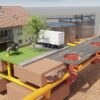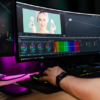
The Transformative Effect of AI on 3D Animation and Motion Design
In the world of 3D animation, artificial intelligence (AI) effect is not just a disruptive force; it’s a transformative one. As technologies evolve, AI’s influence continues to redefine the boundaries of creativity, opening up new vistas for animators and motion designers.
 How does AI affect animation?
How does AI affect animation?
AI affects animation in many profound ways. By streamlining the creation process, it allows animators to focus more on creative tasks. Traditional animation techniques require countless hours of manual labor to create even a few seconds of footage. AI has revolutionized this process by automating many labor-intensive tasks, increasing efficiency, and reducing the time it takes to animate.
For example, AI algorithms can quickly generate multiple iterations of an animation sequence, allowing animators to select the best option. This helps companies like Austin Visuals 3D Animation create high-quality, intricate scenes in less time than traditional methods would allow.
How does AI help animation?
AI is a boon to the animation industry. With AI, animators can create more realistic characters, props, and environments, enhancing the audience’s immersive experience. AI-powered tools can analyze and mimic real-world physics, making movements more natural and believable. AI can also simulate complex elements like fur, water, or smoke with impressive realism, adding depth and richness to animated scenes.
Furthermore, AI aids in the creation of unique character designs. AI-based algorithms can generate hundreds of distinct character designs based on specific parameters, offering a wider range of options for animators to choose from. Such innovative applications of AI technology are contributing to the groundbreaking work done by studios such as Austin Visuals 3D Animation.
Can artificial intelligence make animation?
Yes, AI is more than capable of creating animation. In fact, AI’s ability to generate animation autonomously has opened up new possibilities in the industry. Using machine learning algorithms, AI can study and
The process begins with feeding the AI system a database of animations. The system then analyzes these data to understand various aspects, like movement, timing, and style. Once the AI has learned enough, it can start creating its own animations. These technologies are perfect for generating simple and repetitive sequences, reducing the load on human animators.
How will AI affect motion design?
AI’s impact on motion design is just as significant. It promises to enhance the effectiveness of motion graphics by allowing for better personalization and viewer interaction. AI can analyze user behavior and tailor motion graphics accordingly, making them more engaging and effective.
Moreover, AI can take motion design to new heights by automating the creation of intricate patterns and sequences. It can even predict future trends, helping designers stay ahead of the curve.
In conclusion, AI’s impact on 3D animation and motion design is transformative. It is reshaping how animations are created, enhancing their quality, and broadening the possibilities for creativity. As AI continues to evolve, we can expect even more exciting developments in this sphere. Companies like Austin Visuals 3D Animation are leading the way in harnessing these cutting-edge technologies to create stunning and impactful animations.

 How does AI affect animation?
How does AI affect animation?


